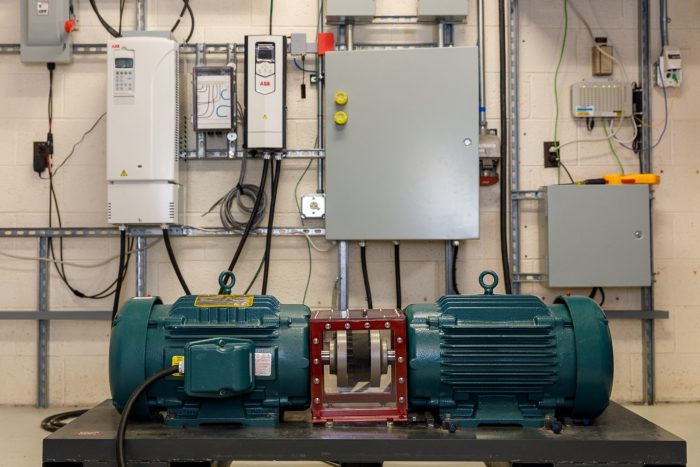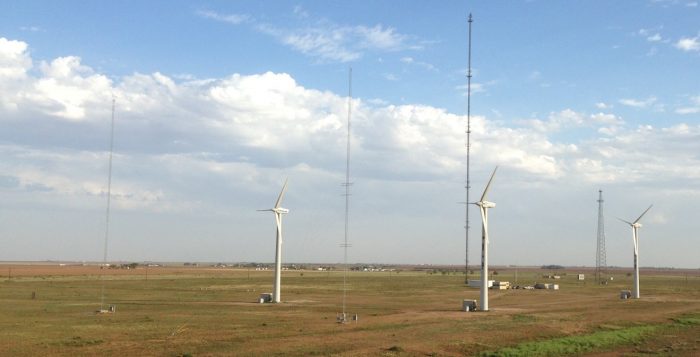The Microgrids, Infrastructure, and Advanced Controls Launchpad (MIRACL) project is a four-year research effort funded by the U.S. Department of Energy’s Wind Energy Technologies Office, led by the National Renewable Energy Laboratory with partners at Pacific Northwest National Laboratory, Idaho National Laboratory and Sandia. The project aims to increase deployment of wind turbines in wind-hybrid distributed energy systems to provide flexibility, security, and resilience to distribution systems and microgrids.
Advanced Controls Research
Sandia’s role in the MIRACL project is the development and testing of advanced control technologies for distributed wind systems, conducted in partnership with NREL. The MIRACL team has identified four general use cases for distributed wind turbines, each presenting unique opportunities for advance controls that expand the potential value that a wind system could provide. The use cases are:
- Isolated grids – This use case includes areas that are disconnected from outside transmission systems and only have access to energy generated within their own system. These areas are typically located in rural, low population, or island communities that are unable to procure energy from outside sources due to lack of transmission infrastructure connecting them.
- Grid-connected microgrids – A microgrid is a group of interconnected loads and DERs within defined electrical boundaries that can operate either connected or disconnected (“islanded”) from an external grid.
- Behind-the-meter (BTM) deployments –BTM deployments are customer-owned and are typically located in residential households or at commercial or industrial facilities. They are BTM in the sense that benefits obtained are typically aimed at reducing or shifting consumption of energy purchases (read via the meter) from their energy provider rather than by providing grid services such as ancillary services or similar.
- Front-of-the-meter (FTM) deployments – An FTM deployment is an asset that is connected to a distribution line that serves load and can be either an individual turbine or a microgrid.
Wind Turbine Controls Testing Capabilities
Sandia brings to key capabilities to the MIRACL project to support the development of advanced controls for distributed wind applications. Sandia’s Albuquerque location houses the Distributed Energy Technology Laboratory where Sandia researchers and partners can test new distributed energy technologies, including controls, in an integrated power hardware in the loop (PHIL) environment where real-time power experiments can replicate virtually any power system configuration with a mix of real and simulated components. As part of the MIRACL project, the capabilities of the laboratory were expanded with the installation of a wind turbine emulator.
Read more about the wind turbine emulator and its potential applications.

After advanced controllers have been successfully demonstrated on the wind turbine emulator, they can be deployed on a real turbine at Sandia’s Scaled Wind Farm Technology (SWiFT) facility located in Lubbock, Texas. The SWiFT site features three 200 kW rated wind turbines with open-source controller software that can be readily modified for experiments. The site is highly instrumented to collect research-quality data on a range of turbine system components including the power converter and the local grid state. The nearby Texas Tech University microgrid facility enables integration of the wind turbines with other distributed assets including a grid-scale battery, diesel generator, photovoltaic array, and controllable load banks.

Real-world Reference Systems
The MIRACL team is applying their combined research methods to real-world power systems that represent specific instances of the use cases described previously. The first of these reference systems is St. Mary’s Village in Alaska which is an isolated power system with wind and diesel generators. The wind turbine is rated at 900 kW which is capable of meeting the peak load of St. Mary’s. This high-wind contribution power system presents many opportunities to explore advanced controls to enable a reliable, resilient and cost-effective power system for the residents. Initially, Sandia is developing computer models of the power system and testing preliminary controls concepts. As the project progresses, the wind turbine emulator will be incorporated to bring an additional level of fidelity to the testing and provide suggested improvements that could be implemented at St. Mary’s or other isolated power systems with similar goals.
Contact
Brent Houchens
Email: bchouch@sandia.gov